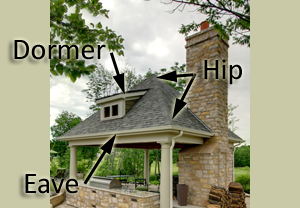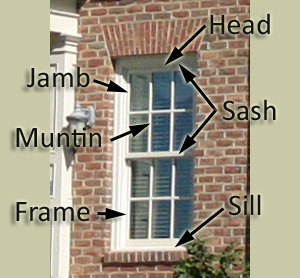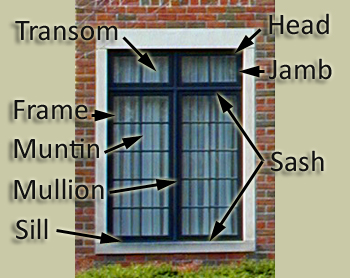
Basic House Parts Vocabulary – Exterior
One of the smartest things Residential Architects have done in recent years is to stop talking to their clients like Architects. We’ve gotten a lot better at conversing like regular people instead of like college professors.
Even so, we sometimes lapse into saying silly things like:
“Communicative inheritance, remembered as the true conveyance of cultural integrity, fosters an exchange of the sacred geometrical building blocks.”
That’s an actual quote from an Architect. Supposedly, that’s about “the future of residential architecture”. Mmm-hmm. If you have any idea what that means, please let me know.
I don’t relate well to that kind of “archi-speak” and I bet you don’t either. I do relate to quotes like this one:
“In the same way that music inspires us to certain feelings, space can do the same thing…”
That’s a simple truth from Sarah Susanka, author of “The Not So Big House” books. Refreshing, stimulating, and understandable. Thanks Sarah.
The “language” of Architecture – especially when we’re talking about home design – doesn’t have to be difficult to understand; after all, if we’re not communicating clearly, how do we know when our designs are successful?
There are some things that can’t be simplified, however. The pieces and parts of a building have names (a house parts vocabulary), and we’ll all communicate better if we use the same terms to refer to them.
Some are a little arcane to be sure but at the other end of the scale, you and I are both confused when you say you don’t like that “thingy” on the roof.
So let’s review the names of some of the major parts of the outside of house. Just a few, really, and they’re pretty easy (plus, there are pictures).
Roof Types
Roofs are either flat, or not flat. Flat roofs are called – flat roofs. Non–flat roofs are called pitched roofs.
See how easy this is?
Describing pitched roofs gets a little more complicated, but there are two basic kinds: gable, and hip. Gabled roofs have a “triangle” at the ends; hipped roofs look more like a pyramid.
There are hybrids and combinations of these two basic types, but they’re less common so I’m not going to bother you with them here.
You know what the peak of a roof is – it’s the very top. When the roof peak is a level, horizontal line, it’s also called a ridge.
A hipped roof may have a ridge at the top, or may come to a point. But at the corners, there are more ridges, running at an angle, up to the ridge at the top. Those “angled ridges” are called hips.
All roofs have some sort of edge at the bottom; when that edge is level, it’s called an eave. When the edge is the end of a gable, it’s called a rake.
Learn to identify a gable roof, a hip roof, and a few roof parts, and your Architect will be impressed.
Window Styles and Parts
Most American homes have one of two basic windows styles – “double-hung”, or “casement”.
Double-hung windows are the ones that slide up and down; there’s a top half and a bottom half and both are both movable (if only the bottom half moves, it’s a “single-hung” window). Double-hung windows are most often found on houses with an American colonial heritage.
Casement windows are hinged on one side like a door, and are usually operated by a hand crank. They’re more appropriately used on homes based on European styles.
Other common residential window styles include awning (hinged at the top), sliding, and fixed; but no matter the style, all windows have a few basic parts in common.
The movable part of any window is called the sash; this is separate from the frame, which is attached to the house. It’s possible to repair a window by replacing the sash and leaving the frame intact.
The top of the frame is called the head; the bottom, the sill; and the sides are called jambs.
And those bars in the middle of the window, what you probably call grids (that’s ok, by the way), those are also called muntins. Muntins are often confused with mullions, which are pieces that join two separate window units together.
Got it? Casually drop a few of those house parts vocabulary terms next time you meet with your Architect; he’ll think you’re pretty cool for speaking of little of his language.
And maybe that will convince him to work a little harder to speak yours.







It's so important to understand the terminology when you're building a house. It makes it much easier to make sure the architect understands exactly what you are looking for, meaning you'll get what you want. It also means you'll understand what the architect is trying to explain, which speeds up the process.